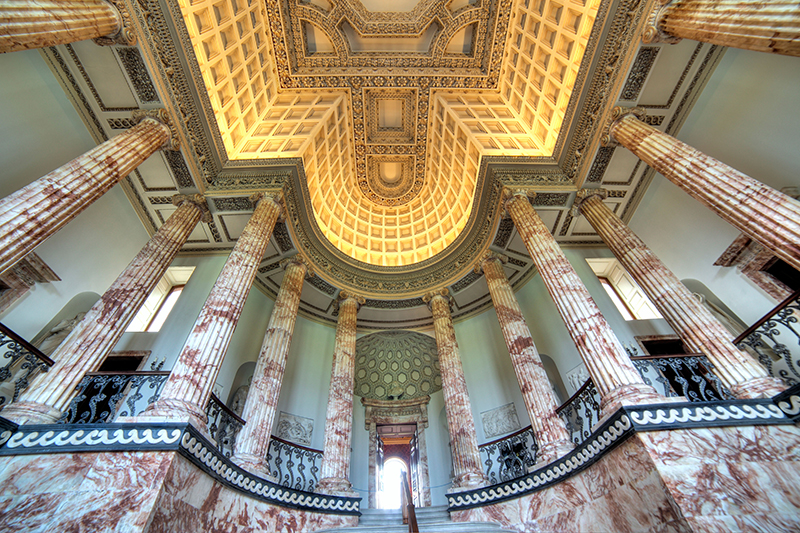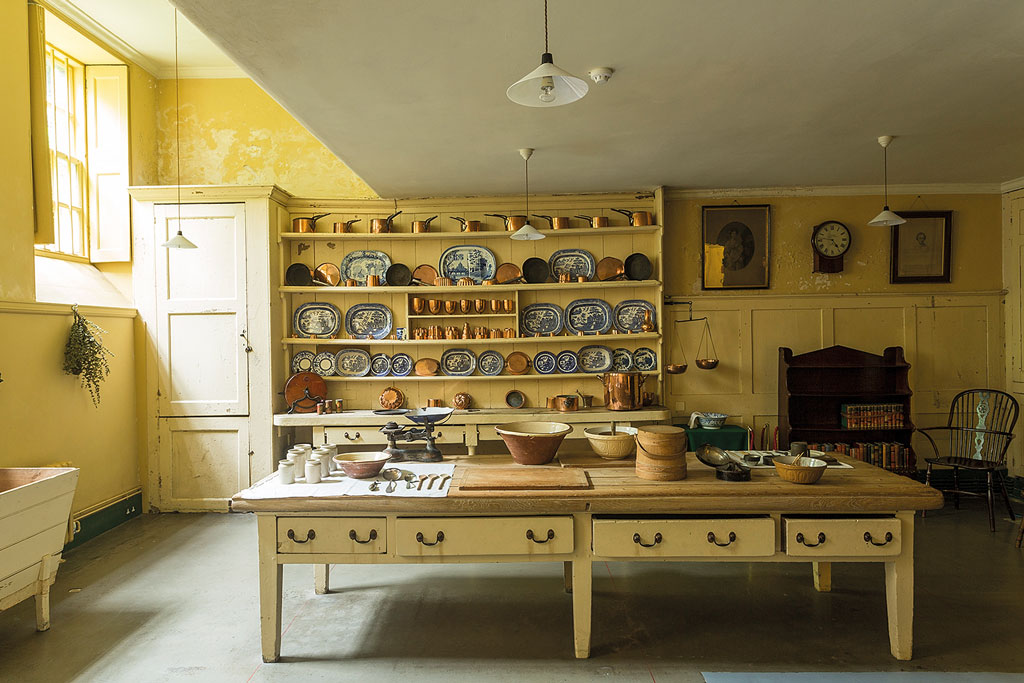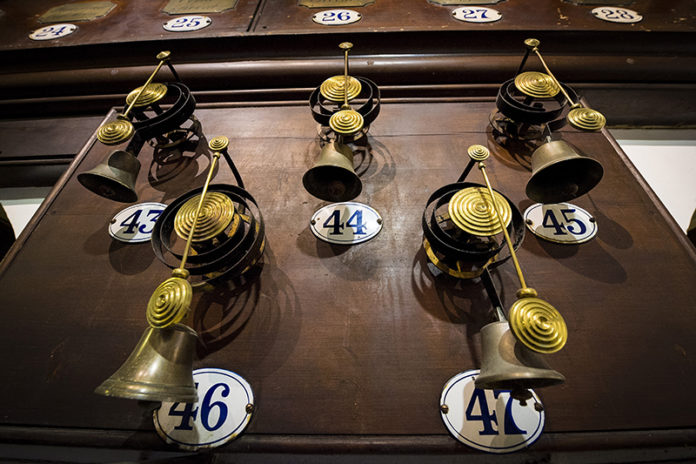We explore what relationships were really like between the upstairs and downstairs residents of Britain’s big houses
In the new Downton Abbey film, veteran housekeeper Mrs Hughes is unequivocal in briefing staff: “I want every surface in this house to gleam and sparkle,” she tells them, and this, says, historian Dr Mac Graham of Holkham Hall, is exactly the effect the grand Norfolk home is after today.
The parallels don’t stop there. While the staff of Downton Abbey prepare for a royal visit, Holkham Hall, seat of the Earls of Leicester, has hosted many a royal guest, starting with a young Queen Victoria. Just 16 and still a princess, Victoria visited as part of a tour, arranged by her mother, of what would soon be her realm.

In the film, staff find their noses put out of joint by members of the royal household who rather take over things, and this is likely a true depiction. When Victoria visited, she would have come with a full entourage – her mother, her ladies in waiting (who may well have been daughters of earls themselves), and her own servants, who would have slept near her on a specially designed mezzanine floor. The royal chamber would have had two bells, one to summon the queen’s own servants, and another to summon a member of the household staff.
By now, we’re all familiar with the terms ‘above stairs’ and ‘below stairs’, but this implies that staff were very separate from the residents of the house and their guests. In truth, staff often lived and worked much closer than that, much like mice in the walls, scuttling up and down staircases hidden behind silk wallpaper and huge tapestries.
On the new ‘Hidden Passages and Servants’ Stairs’ tours of Holkham Hall, visitors can go behind the scenes and see just how well this 18th-century property was designed to enable staff to get to the family and high-status guests in the quickest possible time.

Guests might be surprised to learn that one staircase acts as the main artery of Holkham Hall, with a labyrinth of corridors that run behind the rooms, making it easy for staff to scuttle around without being seen.
Dr Mac Graham, who has been instrumental in the curation of these tours, says: “We are able to show how the housekeeper and her staff were able to get to those rooms very quickly up one little flight of stairs – you think you’re way behind the scenes and then suddenly through a little discreet door, you’re in one of the most lavish rooms in the house.

“It wasn’t random,” Dr Mac Graham continues. “If you go back to a Tudor house or an older house it is going to be ramshackle and difficult to find your way around. Here it is very organised and symmetrical: everything has been thought through.”
At the end of the tours, which take place every Wednesday from April to October, you come down the butler’s staircase where you can see a big row of bells, much like in Downton Abbey, which gives some idea of the machinations that go into running a house like this.
Though the divide between the owners of big houses (and their important guests) and staff, between the upstairs and downstairs, was often clear, sometimes relationships were known to cross boundaries.
In the 1820s, high society was shocked when septuagenarian Sir Harry Fetherstonhaugh of Uppark House, in West Sussex, fell in love with his young dairy maid (some 50 years his junior) and married her. The story goes that on hearing young Mary Ann Bullock singing, Sir Harry proposed to her on the spot, saying: “Don’t answer me now. But if you will have me, cut a slice out of the leg of mutton that is coming up for my dinner today.”

When Sir Harry’s mutton arrived, the slice had indeed been cut, and the marriage subsequently took place. Despite creating quite the scandal, it was nevertheless a successful marriage, lasting until Sir Harry’s death in 1846. Perhaps at the age of 71 Sir Harry felt it was time to put his bachelor days behind him.
Lady Fetherstonhaugh then found herself the owner of a vast estate, which by the 1850s totalled some 5,149 acres and employed 203 workers. When she died, in 1874, Mary Ann left the estate to her sister, Frances, who then took on the Fetherstonhaugh name.

Today, the sumptuous interiors of the first-floor rooms remain resolutely Georgian, while visitors can explore the servants’ quarters in the basement, such as the Still Room, where preserves were made and the finishing touches added to the family’s meals before they were taken upstairs to the servery. All the rooms downstairs are presented much as they would have been in the late 19th century.
Once of the most opulent houses in Jacobean England, Audley End House is a beautiful 17th-century country house in Saffron Walden, Essex. Considered a prodigy house, originally built to entertain King James I, it was later owned by King Charles II, who would stay here when he attended the races at nearby Newmarket.
Many visitors are struck by the grandeur of the Great Hall (which has stood in for Balmoral and Windsor on screen), or the state bed, commissioned ahead of a royal visit in 1794. However, to really get a sense of the hard labour that went into running a house of this scale, a visit to the 1880s service wing is a must.

Here you can see the Coal Gallery and the Wet Laundry, and learn about the specific hierarchy, not just between those who lived upstairs or downstairs, but also between the servants, who themselves had a clear pecking order. On weekends from April to September, you can also watch the cook and her staff prepare dishes using traditional methods and adhering to the recipe book of Avis Crocombe, who was the head cook here in the 1880s. Her job was no small feat: one Christmas alone, Lord and Lady Braybrooke and their guests consumed 541lb of meat and 34 rabbits. Roasted swan was occasionally on the menu, too.
And then there is Blenheim Palace, the house built by the Duke of Marlborough and his wife, the formidable Sarah Churchill, on land gifted by Queen Anne following the Duke’s victory in the War of the Spanish Succession.
The gilded state rooms give a sense of the history and prestige of the house. An Upstairs tour will bring you into the bedrooms where guests of the Marlborough family stay even today (and show how the rooms are linked by secret doorways or corridors). Guides will also reveal anecdotes about past residents and guests, from Winston Churchill, who was born here, to Charlie Chaplin and Bill Clinton.
Meanwhile, the Downstairs tour gives you a peek at how staff scurry through passageways and tunnels to ensure everything keeps ticking along nicely. Service is not taken lightly here and the pressure is on: from the moment food is plated up by the Michelin-starred chef, staff have just 34 seconds to place it on the table, one floor above. Mr Carson, Downton Abbey’s exacting butler, would no doubt approve.






 © 2024
© 2024